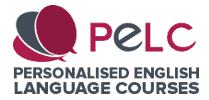Teachers’ beliefs in ELT
Teachers’ beliefs in ELT - such an undervalued topic for discussion in teachers’ rooms and on TESOL courses worldwide.
As teachers of the English language, we owe it to both ourselves and our students to look back on our careers, analyse our current approaches to teaching and define our own beliefs.
With the help of some fascinating articles and books written by Professor Jack C. Richards and colleagues on the topic of teachers’ beliefs in ELT, I’ve been on my own little journey to pin down how my current beliefs as an English language teacher have been shaped.
In this post, I share some of my teaching experiences and discuss how they led to the evolution of my own beliefs as a teacher. I also discuss how my approaches to teaching have changed as a result of a shift in my beliefs.
TEACHERS’ BELIEFS IN ELT - SCHOOL DAYS LEAVE THEIR MARK
Regarding teachers’ beliefs in ELT, a teacher’s experiences at school undoubtedly determine the development of their belief systems.
One point put forward by Clark and Peterson (1986, summarised and discussed in Breen, ms., pp. 47-48) is that “core” teachers’ beliefs are built as a result of teachers’ own schooling while observing teachers who taught them.
As I discussed in an overview of my language learning philosophy and teaching methods, I have no idea how I got a top grade in my French school-leaving exam. After five years of learning the language, I could barely say a single thing about myself.
In my first few years as an EFL teacher, I should have reflected on my language learning experiences at secondary school. This would have kickstarted the process to cementing my beliefs as a teacher.
Frankly, in my first year of teaching, I was so intent on being organised and turning pages in coursebooks that I had little time to think about self-improvement.
In 2009, I began studying for a master’s degree in ELT at The Nottingham Trent University. Hence, I had more time to reflect on my experiences as a language learner and teacher. Most importantly for me, my course tutors rubbished the audio-lingual method. Regrettably, I had to mercilessly drill students while teaching in Bosnia the year before starting my MA. To be frank, I bought into the Director of Studies' methods more than I should have.
As I learned more about language teaching methodologies, I came to the conclusion that my French and German teachers at school were out of touch with reality. Drill this, drill that. However, to be fair to my language teachers at school, they were probably just following orders to turn pages in set textbooks.
So, yes, Clark and Peterson, our experiences at school do run around our minds. However, it can take time for them to boil to the surface, especially when we’re just starting out as ELT teachers. Or when we have bosses who are addicted to audio-lingualism.
MEMORIES OF THE CELTA
My first taste of EFL was back in 2006 as a trainee teacher doing CELTA at the former International House in Kraków, Poland.
I’m not going to dive into an extended analysis of the pros and cons of CELTA right now. In a nutshell, the course did little to instil any positive beliefs in me.
On the CELTA, the idea of creating lesson plans which revolve around the PPP (presentation, practice, production) model seemed to be very contrived.
Frankly, which teachers actually stick to such “methods” post-CELTA?
If a teacher presents a grammar item to students at the beginning of the class, is it really possible for low-level students to accurately apply this grammar point in the production activity at the end of the lesson?
Moreover, what if half the class seems to be already familiar with the “grammar item of the day”?
Don’t get me started on other CELTA-related acronyms, such as CCQs (concept checking questions). My stomach still churns.
The biggest influence that the CELTA had on me was an almost manic obsession with organising the sequence of activities and predicting to the exact minute how long they’d take. Thus, one of my first beliefs as a teacher arose during the CELTA:
“If I am well-prepared and plan activities to the exact minute, I won’t fall apart during lessons”
Naturally, when one is freed from the shackles of CELTA tyranny, any initial beliefs gained with regard to timing and sequencing should begin to dissipate.
ON BEING A NOVICE EFL TEACHER
My first job was at Brytania School of English in the town of Dębica in southeastern Poland.
First impressions - very positive. Good students, a mostly hands-off yet supportive Director of Studies, a non-interfering boss and an experienced colleague from England who was always willing to advise me.
I put a great deal of effort into lesson planning. However, as time went by, I realised that it’s impossible to plan lessons to the minutest of details. It’s difficult to predict what gaps in students’ knowledge students might crop up in any given lesson. Hence, additional time may need to be devoted to giving certain students extra help. Or, a teacher might have to explain a tricky structure to the whole class.
Thus, three months into my teaching career, my attitude towards meticulous to-the-minute lesson planning began to shift:
“I should prepare activities well, but I don’t need to plan to the minute. Allow for some spontaneity and surprise”
My second full-time job was at a well-run language school in northeastern Bosnia. I quickly realised that my boss was an audio-lingual buff. For nine long months, I did little else but do choral drills with seemingly baffled kids and adults.
The amazing thing was that my boss’s enthusiasm for the audio-lingual method whipped me up into a choral-drilling frenzy. Unfortunately, my students could not say anything with substance about themselves whenever we weren’t in drilling mode.
In Bosnia, I was overworked, exhausted and powerless. I believed in something that was, quite frankly, unbelievable.
Poor students.
BUILDING EXPERIENCE - PRINCIPLES DERIVED FROM APPROACHES AND METHODS
Broadly speaking, I have experience with four approaches to second language teaching - communicative language teaching (CLT), the audio-lingual method, the Lexical Approach and task-based language teaching.
I’ve already mentioned my audio-lingual crazed boss at the second language school I worked for. I’ll never forget the day she rubbished the communication-based teaching I did at my first school, thus: “So, Steven, you just chatted with your students”.
After my experiences with CLT and audio-lingualism, I moved to Nottingham to study for a master’s degree in English Language Teaching.
Naturally, I learned about very many language learning and teaching theories and approaches on the course. However, it was the Lexical Approach, masterminded by linguist Michael Lewis, which began to capture my attention.
Words, words, words - I’d always had a fascination with words. Hence, it dawned on me that my best bet was to encourage my students to focus on learning words and phrases.
I wrote my thesis on the vocabulary recording strategies adopted by Chinese students on a set of blank flash cards.
The rest is history. A very deep belief was born while I was just about to wrap up my master’s degree:
“Students need words. Not just individual words - phrases and collocations as well. They need to learn the phrases that native speakers use on a regular basis. From now on, grammar will come second to lexis in my classes”
Aside from the occasional task-based activity I set students, the Lexical Approach has almost wholly defined my teaching since 2012.
As I shall discuss later, I believe that the Lexical Approach helped me to master the Serbian language in quick time.
THE LEXICAL APPROACH - a SPRINGBOARD FOR MY OWN IDEAS AND METHODOLOGIES
I read a little about the Lexical Approach whilst studying for my master’s in 2009.
Perhaps I didn’t have to read much. Something clicked immediately. My future students would need to learn plenty of phrases and collocations, or “lexical chunks” - words that are commonly found together.
After gaining my master’s in 2011, I worked in a private language school where I had to use coursebooks once again. However, I put far more emphasis on teaching vocabulary and collocations as well as getting mostly elementary and pre-intermediate students to create personalised sentences using target vocabulary and collocations.
At the beginning of 2012, I arrived in Łódź, Poland, to teach General English and Business English to high-flying CEOs and managers working in logistics and a range of SMEs.
It was the first time I did not have to work according to syllabuses and coursebooks. My boss’s instructions were more or less: “Use as few materials as possible and learn the art of getting people to talk about themselves”. In plain terms, I was advised to become a Dogme teacher.
I couldn’t quite get myself to turn up to class without a plan or an article, like my boss often did. Nevertheless, I revelled in the freedom I had with selecting materials and demonstrating vocabulary and collocation learning strategies to students.
I began to immerse some of my students in authentic materials - that is genuine materials created for native speakers. It was a breath of fresh air for me to analyse news articles and listen to TED talks with my students. Authentic materials enabled them to incidentally acquire vocabulary, collocation and grammar items.
THE kEY PRINCIPLES OF THE LEXICAL APPROACH
Without consciously knowing it, my teaching began to bear the hallmarks of many of Lewis’s key principles of the Lexical Approach (pp.vi-vii):
- The grammar/vocabulary dichotomy is invalid; much language consists of multi-word ‘chunks’;
- A central element of language teaching is raising students’ awareness of, and developing their ability to ‘chunk’ language successfully;
- Grammar as structure is subordinate to lexis;
- Task and process, rather than exercise and product, are emphasised;
- Receptive skills, particularly listening, are given enhanced status;
- The Present-Practise-Produce paradigm is rejected ...
OUT OF THE CLASSROOM AND ONTO MY LAPTOP
Most of my teaching during the years 2013-2025 took place online.
I no longer had much face-to-face contact with students. Subsequently, I had to adopt a more engaging and novel approach to materials design.
The solution I came up with was to write and voice record my own texts in which I share some of my life experiences and opinions on current affairs.
My texts are written in the first person and are full of phrases commonly used by native speakers. Therefore, the language in my texts is more representative of spoken English rather than formal written English.
Based on my students’ apparent enthusiasm when it comes to working with my texts, and their ability to consistently recall the language and phrases in them, the following belief has remained with me since 2013:
“A teacher’s self-written texts can serve as a wonderful bonding mechanism between teacher and student. Students look forward to receiving glimpses into their teacher’s life. Such intrigue leads to greater text interaction among students and, in turn, improved recall of structures and collocations”
LEARNING SERBIAN MADE ME A BETTER TEACHER
In 2013, I met a Serb who would become my future wife. I began taking Serbian lessons online with a very good teacher of Serbian from Belgrade. In May, 2014, my wife and I moved to Serbia.
I was conscious of the fact that I needed an innovative language learning strategy to help me keep track of all the phrases and vocabulary I was learning in my classes and hearing outside in the real world.
The answer - a Word-Phrase Table.
In essence, I realised that I needed to create personalised sentences which contained recently encountered words and phrases.
As I discovered after only a few months of contact with the Serbian language, I was able to recall these true sentences about my life, hobbies and experiences etc. in the conversations I was having. I like to say that these sentences were “swimming in my brain”.
With the Word-Phrase Table, I believe I found the essence of fluency. During conversation, language learners need lexis and personalised sentences racing around their mind and on the tip of their tongue.
Hence, a new belief came into being. Slowly but surely, I began to pass on my language learning hacks to my students of English. Most of them were intrigued by the concept of “personalisation”:
“I can teach students lots of words and collocations - but what then? My students need to create personalised sentences which contain these newly-learned words and collocations. I need to create a Word-Phrase Table for them myself, and give them an early motivational boost by adding a few recently learned words. After that, I can create a few true sentences using these words and phrases, based on what I already know about the students lives. Then, I should let them take over. I will always be at hand to check my students' Word-Phrase Tables”
SELECTIVE VOCABULARY/COLLOCATION LEARNING
I began to notice how several of my students were focusing on some rather rare and unhelpful lexis. Therefore, I had to teach my students to be selective with their vocabulary/collocation learning:
“It’s not necessary to record every single new word and collocation in a Word-Phrase Table. I need to help my students and tell them which words and phrases native speakers tend to use. My students need to know which phrases could really make a difference to their fluency”
THE TEACHER AS A “GUIDE”
When I was learning Serbian, it wasn’t all about collocations and my Word-Phrase Table.
I began to see my teacher was a “guide”. Firstly, I prepared questions for her based on some of the language I was hearing in the real world. For example, I began to pay heed to everything I heard in public institutions and in conversations my wife was having with her relatives. Moreover, I began to find texts which interested me. My teacher and I would then discuss them and I’d pick her brain about some of the grammar points and lexis.
It dawned on me that teachers shouldn’t have to spoon-feed students. Students need to take the initiative by finding their own materials. From these materials, they should note down questions and personalised sentences ready for their teacher to check:
“I shouldn’t spoon-feed my students so much. They have interests and passions. I have to believe that they do some reading in English. Presumably, they listen to podcasts and interviews. Let them plan classes for themselves from time to time”
Declaring war on crosslinguistic influence
2026 is just around the corner. Frankly, I can’t see my beliefs shifting away from the importance of learning and personalising collocations and lexical chunks. Nevertheless, it’s time for a fresh injection of ideas.
If I had one criticism of myself as a teacher, it would be that I’m too attached to my comfort zone. Perhaps, I need to start seeing things through my students’ eyes.
Therefore, in recent months, I’ve begun looking at the issue of crosslinguistic influence between Polish and English. For example, Polish speakers often struggle with English's word stress patterns where the English SVO (Subject-Verb-Object) structure contrasts with Polish's case-based flexibility. I'm in the process of developing exercises for my Polish learners of English in an effort to demonstrate that the mistakes they typically make are caused by negative transfer (interference).
In conjunction with helping my students' overcome crosslinguistic influence, I've also been showing my students how they can tackle fossilisation. Fossilisation is when a learner's progress in a second language plateaus at the intermediate level, with the use of incorrect forms becoming permanent and difficult to change.
All in all, what a breath of fresh air these exercises have been for both my Polish students and me. Everybody’s been able to step out of their comfort zones and I think that my students are beginning to take the seriousness of crosslinguistic influence on board.
Finally, I've been going through all my students' errors which I record during class time in a Google Doc to find instances of negative transfer. I've also been reading up on the topic of crosslinguistic influence in second language acquisition. On the basis of all the notes I've been taking and analysis I've been doing, I hope to write an e-book along the lines of: Polish as L1, English as L2: The Definitive Guide to Crosslinguistic Influence. More to come on this project throughout 2026.
Frankly, I haven’t read much ELT-related literature since 2011. Hence, it’s been refreshing to dip into some articles and books again.
Conclusion
Teachers’ beliefs in ELT - we owe it to our students to reflect on, and critically analyse, our practises and approaches.
It hasn’t been easy for me. However, I’m beginning to implement new ideas and techniques in my classes. My students have mostly been preparing admirably for these tasks.
With this post, I’ve been on a deeply reflective journey across 19 years of teaching English.
Are you ready to step out of your comfort zone as well?
References:
Breen, M.P. (ms). A pragmatics of language teaching: From practice to principles. Manuscript.
Lewis, M., 1993. The Lexical Approach: The State of ELT and a Way Forward, London: Commercial Colour Press



